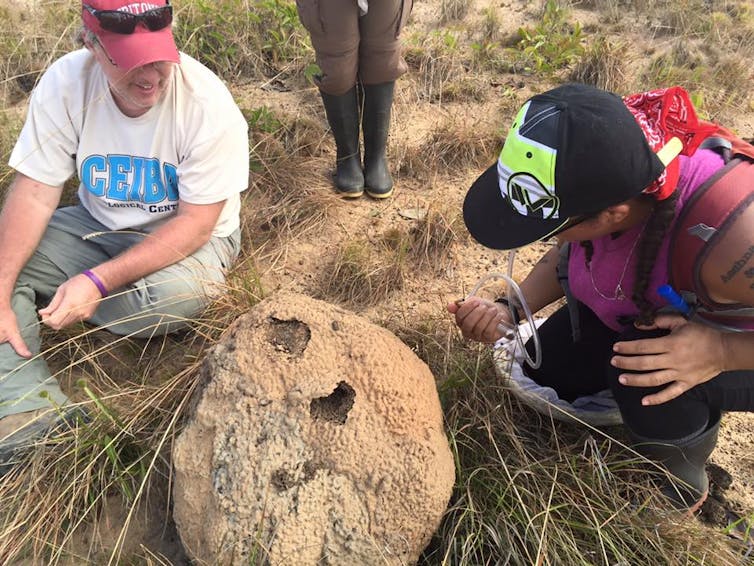Who would have guessed this TV character is still inspiring women toward Stem. Insects, those creepy, crawly residents of nature’s demi-monde, were not what the girls in my high school class wanted to study at university. I wasn’t sure I wanted to either. But I knew that invertebrates were the only thing that fascinated me about Dr. Lang’s grade 12 biology class.
When I arrived at the University of British Columbia, where I enrolled to study marine biology, I settled into dorm life with about 100 other women who had come to UBC to study art and sciences. I had great professors for my introductory science classes, most of whom were gray-haired, white men, who spent class time spewing inorganic chemistry formulas to lecture halls packed with more than 100 freshman students. Dorm life revolved around bland meals at the cafeteria, group venting sessions about various classes and coursework, and “must-see TV” in the common room Thursdays and Fridays.
Related: The FBI Almost Cancelled The ‘X-Files’ Because It Was Too Close To The Truth
It was through my dorm sisters that I was introduced to “The X-Files,” starring a brilliant, pragmatic female scientist, Dr. Dana Scully. For the first time, huddled around the small common room TV in the dark (for ambiance my roommate insisted), I saw someone on screen who was not only unfazed by insects and dissections, she was fascinated by them. Here was someone with the same innate curiosity I had about the natural world, successfully navigating the politics of her science career, side-stepping sexism and changing the face of science.
We watched “The X-Files” with cult-like zeal every Friday, spending commercial breaks talking about what we would do if we were in her situation in a particular episode. We never discussed her being our role model, but it clear that through her character we were learning about what we all could become.

I completed my Bachelor of Science at UBC, and went on to complete a Ph.D. at Rutgers University in New Brunswick, New Jersey. I received a competitive National Science Foundation fellowship to study at the American Museum of Natural History for my postdoc. Ultimately, I built a research career as a professor of biology at Rutgers.
I study insects, specifically the evolution of insects over the last 400 million years. My Ph.D. focused on dragonfly evolution, and my postdoc on termite evolution, and I have built a lab that studies both. My research program presently focuses on termite relationships and how termite speciation patterns were driven by varying diets, dragonfly and damselfly wing and genital evolution, general insect behavior, as well as evolutionary analysis methodology.
Related: This Environmental Program Is Teaching Girls How To Be Scientists
We have used genetics and next generation sequencing tools to answer questions about how insects radiated over geological time. We examine insects from around the globe to understand how dispersal and climate events that have lead to present biogeographical distributions of insects.
My lab currently has five female, and one male, scientists working toward graduate degrees in insect evolution. Through my career I have had the opportunity to use my position to recruit and retain women in science. Over the years, I’ve tried to advocate for greater diversity and inclusion at both the university level and in professional academic societies.
When I first began at my position, I was routinely mistaken for a secretary or the assistant of a male professor. After 10 years, students know that I, too, am what a scientist looks like. Thinking back to those dark evenings watching “The X-Files” back at the University of British Columbia, we never would have imagined a female scientist with a lab full of other women scientists, writing papers and getting grants. Never having seen a woman leading a lab group, I didn’t know it was a possibility until I saw Scully on TV.
RELATED: The Most Popular Marijuana Flavors
Since beginning my lab, I can’t say that I’ve ever been in the supernatural situations Dana Scully encountered, but her pragmatic and practical approach to research questions is something that I aim to use in my work and with my graduate students.
We have studied exploding insects, termites with jaws strong enough to demolish thick mahogany trees, ancient species surviving in small isolated populations and dragonflies that migrate around the globe. Not exactly “The X-Files,” but thrilling science nonetheless – and ours is nonfiction.![]()
Jessica Ware, Associate Professor of Biology, Rutgers University Newark
This article is republished from The Conversation under a Creative Commons license. Read the original article.


